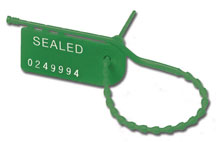



Find all of your laboratory and workplace safety supplies at Safety Emporium!
 Toxic |
 Glossary Index |
 TRI |
| MSDS Topics |
Free Sites | FAQ's | Regulations | Glossary | Software | Suppliers |
| Books | Forum | Poll | Fun stuff | Quiz | Store | |
| Understand your MSDS with the MS-Demystifier | Search ALL our MSDS info | |||||

A trade secret is any formula, pattern, device or compilation of information which is used in one's business, and which gives him an opportunity to obtain an advantage over competitors who do not know or use it. It may be a formula for a chemical compound, a process of manufacturing, treating or preserving materials, a pattern for a machine or other device, or even a list of customers. In other words, the trade secret is proprietary information, that which the holder of the secret does not wish to be known to others, particularly his competitors.
In the context of an SDS, a trade secret and "secrecy" have a very rigorous definition as defined by OSHA in Paragraph I of the Hazard Communication Standard, 29 CFR 1910.1200.
When 29 CFR 1910.1200, the OSHA Hazard Communication Standard was being drafted, some manufacturers worried that the requirement to provide MSDS's (now called SDS's) would give away their "secret formulas" or proprietary information about their products. Thus, Paragraph (i) of the Standard permits a manufacturer, importer or even employer to withhold the specific chemical identity of a material provided that all of the following apply:
The designation of an incident as a "medical emergency" is left to the discretion of the treating physician or nurse. Failure to disclose the identity in this situation will result in the issuance of a willful citation. For non-emergencies, where OSHA believes that the chemical manufacturer, importer or employer will not be able to support the trade secret claim, the withholding of a specific chemical identity shall be cited as a violation.
Appendix E of 29 CFR 1910.1200 has a very specific and rigorous definition/discussion of "trade secret" which states "Matters of public knowledge or of general knowledge in an industry cannot be appropriated by one as his secret. Matters which are completely disclosed by the goods which one markets cannot be his secret." So if you have a product which is easily reverse engineered or is a generic equivalent of other products, it would be quite difficult to support such a claim. You can not claim a "trade secret" merely for your own convenience or to prevent others from knowing that your magic cleaner is really just isopropyl alcohol. See this OSHA interpretation letter titled "0/23/2001 - Criteria for trade secret status" for more information.
Trade secret exclusions in SDS's are not very common. While we do not have any recent data, we know that at one point the DoD's non-public HMIRS system contained about 270,000 MSDS's and only about 5% of these had proprietary information in them.
On occasion, you may encounter a Safety Data Sheet that does not list the hazardous components by chemical name. If the trade secret provision of Paragraph (i) is invoked, the SDS must specifically state in Section 3 (Composition/information on ingredients) that the identity is being withheld as a trade secret and information about the properties and effects of the hazardous chemical must still be disclosed.
In addition, the specific chemical identity must made available to health professionals, employees, and designated representatives in both emergency and non-emergency situations as detailed in Paragraph i(3). Moreover, individual state Right-To-Know (RTK) laws may afford employees additional access to trade secret information.
The trade secret provision may not be invoked merely to prevent recipients from seeing the identity of the supplier or distributor of the product. See our SDS FAQ question As a distributor, can we change the name and address on an SDS?.
In the state of New Jersey, a trade secret claim must include the New Jersey Trade Secret Registry Number (TSRN).
See also: Chemical, manufacturer.
Additional definitions from Google and OneLook.
Entry last updated: Friday, January 14, 2022. This page is copyright 2000-2025 by ILPI. Unauthorized duplication or posting on other web sites is expressly prohibited. Send suggestions, comments, and new entry desires (include the URL if applicable) to us by email.
Disclaimer: The information contained herein is believed to be true and accurate, however ILPI makes no guarantees concerning the veracity of any statement. Use of any information on this page is at the reader's own risk. ILPI strongly encourages the reader to consult the appropriate local, state and federal agencies concerning the matters discussed herein.